No matter how well you ride, Dirt Bikes are bound to need repairs at some point. Between motors that refuse to turn, busted plastics, and worn-out chains, things do happen, particularly off-road. Learning how to diagnose and address these issues in advance helps every rider be better prepared. This article walks you through typical Dirt Bike faults, helpful DIY repair solutions, and when it’s time to leave it to the experts.
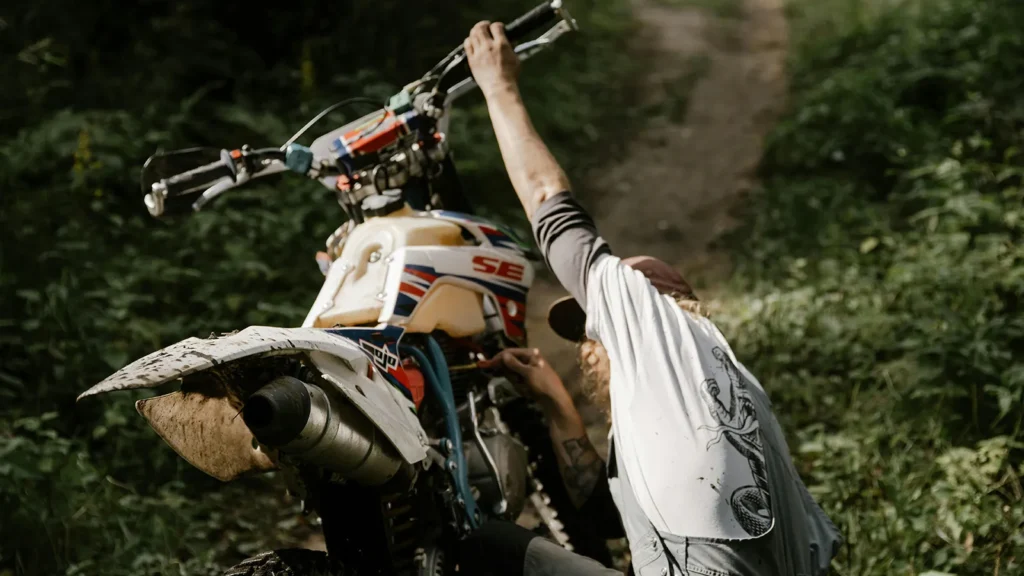
目录
切换Common Dirt Bike Issues and Fixes
越野摩托车 take a lot of punishment. Hitting rough ground, sand riding, and jumping obstacles wear out parts quicker than on standard street bikes. The most common issues and their solutions are as follows.
1. Dirt Bike Won’t Start
There’s nothing worse than getting ready to ride and discovering your Dirt Bike won’t start. Worry not, though—most no-start conditions are the result of a few easy problems.
Let’s go through them one at a time so you can hit the trail (or track) sooner.
Start with the Easy Stuff: Kill Switch, Fuel, and Spark
Before you dive in deep, always verify the painfully obvious:
- Kill Switch: Has it been inadvertently turned off?
- Fuel Supply: Do you even have fuel in the tank?
- Spark Plug: This little bit of gear can reveal a lot.
Spark Plug Check: Hints at What’s Happening
Remove the spark plug and look at the tip:
- Dry plug? That indicates fuel isn’t reaching the engine.
- Wet or oily plug? You may be experiencing flooding or a rich fuel mixture.
- No spark when cranked and grounded? Your ignition system may be at fault. You may have a faulty CDI unit, poor wiring, or a cracked stator, the usual suspects in cases of ignition failure.
Fuel System: Ensure It’s Providing
Check the fuel valve (petcock): If closed off or clogged, fuel cannot enter the engine.
On a fuel-injected Dirt Bike, hear the fuel pump prime when you switch on the ignition. If you don’t listen to it:
- Check the fuse
- Check the fuel pump itself
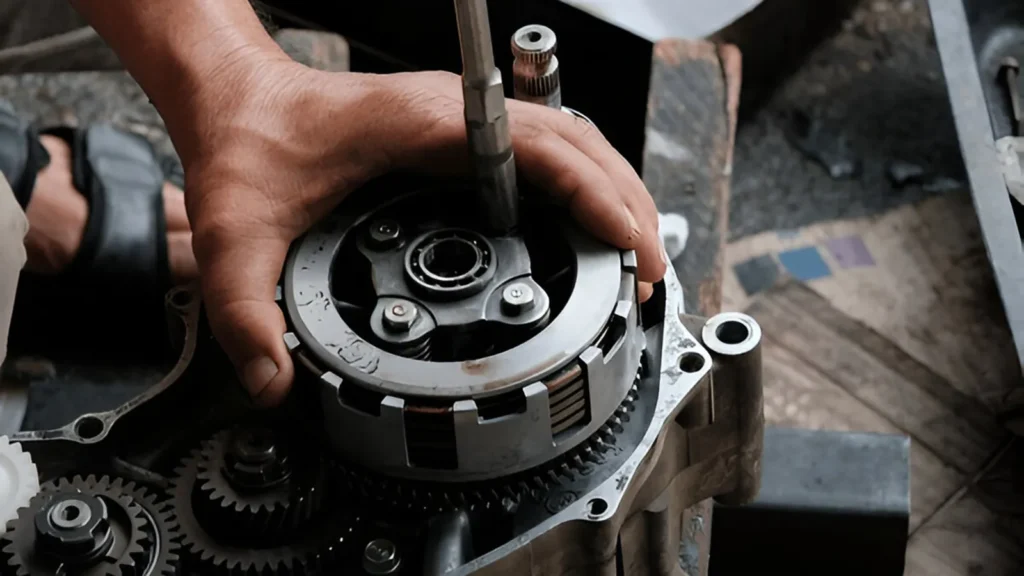
2. Engine Overheating
Dirt Bikes will always be hot-running, but a hot-running engine above the normal temperature is an absolute sign of overheating. The most common causes are plugged radiators, low coolant levels, a dirty fuel mixture, or a combination of all three.
- If your radiator fins are clogged with mud, airflow is obstructed.
- Flush them out with water under low pressure.
- Also, check the coolant level and flush the system if it’s dirty or old.
- Check the water pump seal for leaks, which can decrease coolant flow and cause thermal expansion of engine components, potentially warping the head or cylinder.
- A lean fuel mixture, caused by a clogged jet or air leak, can increase combustion chamber temperatures. Pre-ignition occurs, and the pistons are damaged. Fix your carburetor or EFI system and check the intake system for leaks or cracks.
Chain & Sprocket Wear
Your chain and sprockets are misaligned or too loose, causing constant friction. Sprocket teeth become hook-shaped or pointed, and the chain becomes loose over time, leading to poor power transmission and rough idling.
To check, search for irregular tire wear on teeth or chain restrictions. Do it yourself with a chain breaker tool and master link pliers. When installing sprockets, install both the front and rear sprockets along with the chain to ensure smooth meshing efficiency.
For cheap, model-specific replacements, you may also try suppliers such as BSE Motors.
Suspension Problems
Dirt Bike suspension gets beat up. If your bike handles too soft, bottom outs easily, or jerks back too harshly in rebound, you might be dealing with torn-up shocks or fork seals.
First, check the fork tubes for oil deposits—a sign that the fork seals are leaking. If the bike oscillates, compression damping or rebound damping is probably out of balance. Rebuilding the suspension involves draining the old fork oil, installing new seals, and refilling with fresh oil of a measured viscosity rating (i.e., 5W or 10W fork oil).
For severe problems, such as internal shock failure or broken springs, a complete rebuild or replacement will be necessary. If you have no concept whatsoever about how to install preload and damping adjustments, send your suspension to a professional tuner.
How to Fix Dirt Bike Plastics
Cracked fenders and broken side panels typically result from crashes or spills. You can either replace plastic or attempt plastic welding.
Plastic welding is used to fuse the broken edges together using a soldering iron and a filler rod. Reinforce with zip ties or mesh if needed. When there is very severe damage, replacement is usually faster and more aesthetically pleasing. Plastic sets are offered by model and typically in fenders, shrouds, and number plates, color-matched.
Budget-conscious riders can often find complete kits on parts websites or in local ads. Just be sure to check that they’re compatible with your bike’s year and model.
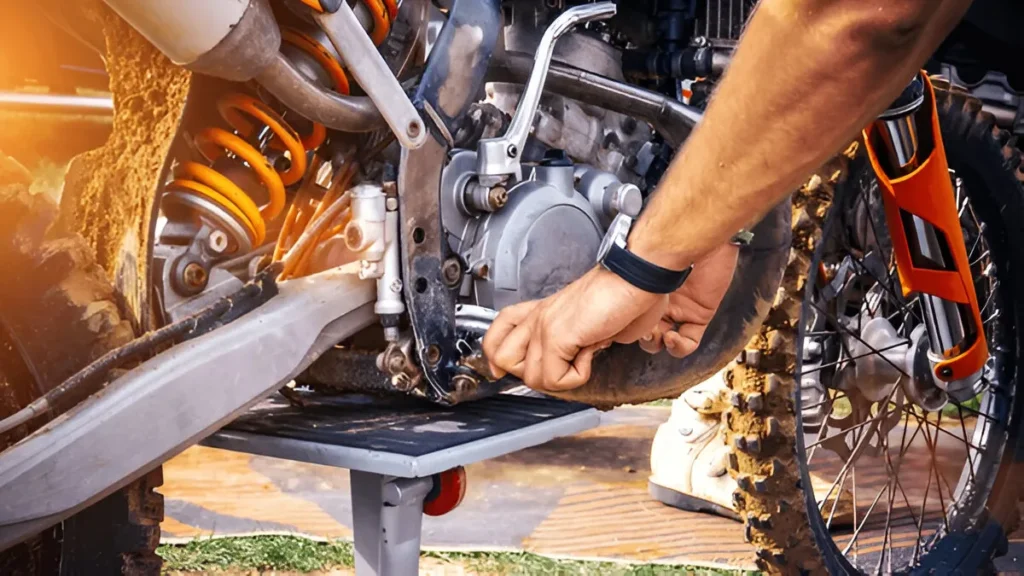
DIY Dirt Bike Repairs – Tools, Skills, and Safety
Rebuilding yourself saves money and makes you comfortable with your machine inside and out—but only if you’re ready.
Tools Every Rider Should Own
A good-quality toolkit is crucial for DIY repairs. You will require a socket wrench set, a torque wrench, tire irons, Allen keys, and a multimeter for electrical diagnosis.
You should also have a chain breaker tool, spoke wrench, and spark plug gap tool. It helps to have a service manual for your exact bike model as a guide for torque specifications and assembly drawings.
Safety First
Always use a proper stand to support the bike when making repairs. Use safety glasses at all times, particularly when grinding or welding. Maintain a fire-safe environment and ensure good ventilation when using flammable chemicals, such as carb cleaner.
Above all, be aware of your capabilities. If you cannot even guess whether to open the 越野摩托车发动机 case or to reset valve timing, it is safest to leave the work to a professional mechanic.
How Much to Fix a Dirt Bike?
The repair cost of a Dirt Bike is very different based on what is faulty and whether you fix it yourself or have it repaired by a mechanic.
| Repair Type | Average Cost (USD) |
| Valve adjustment | $150–$300 |
| Top-end rebuild | $300–$700 |
| Chain and sprocket set | $80–$150 |
| Electrical diagnostics | $100+ |
| Plastic replacements | $20–$100+ |
DIY repairs, such as plastic interchanges or chain adjustments, are inexpensive. More labour-intensive maintenance, such as a top-end overhaul with piston rings, gaskets, and timing alignment, may be costly and time-consuming.
Regular maintenance, such as washing your air filter and checking the coolant, reduces the likelihood of expensive repairs.
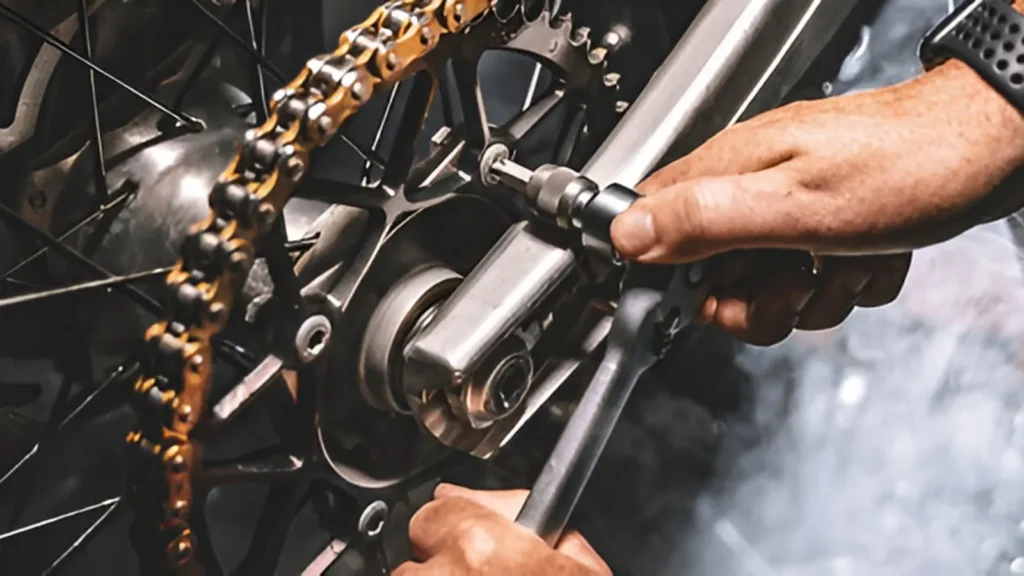
When to Visit a Professional Repair Shop
Even experienced DIY riders may occasionally need assistance. If your problem exceeds simple troubleshooting or persists, it is recommended that you take your Dirt Bike to a professional.
Signs You Need a Dirt Bike Mechanic
If your engine is continually knocking, doesn’t have power, or refuses to start with a new plug and full tank of gas, more severe problems are at hand. A dead ignition coil, a bent CDI, or frozen clutch plates are problems that are difficult to diagnose without the aid of test equipment.
Grinding, slipping gears, or hard shifting often indicate internal wear that requires the engine case to be opened.
Selecting the Right Dirt Bike Mechanic for Your Requirement
To locate a reputable shop, use online search terms such as “Dirt Bike repair near me” or “best off-road bike service.” Strong Google and Yelp reviews are recommended. Additionally, consider visiting websites such as BSEMotor for local opinions.
Not every motorcycle mechanic is the same. Select a technician or a shop that will comprehend off-road capability and how unique stress Dirt Bikes inflict upon themselves.
Ask if they work on Dirt Bikes and whether they use OEM (Original Equipment Manufacturer) or aftermarket parts. Choose repair centers that offer diagnostic transparency—meaning they’ll explain the issue in simple terms and show you any defective parts they replaced.
If you are a business or an institution, look for shops that provide annual service agreements. These packages can reduce your overall maintenance expense and provide you with priority service.
Prevent Problems from Occurring in the First Place
Competent riders fix problems before they happen. Preventive repairs prevent breakdowns during riding and save long-term expenses.
Taking Care of a Dirt Bike Between Rides
Keep the bike tidy after each ride. Lubricate the chain constantly, inspect the air filter, and keep the tire pressure at the right level. Dirt, sand, and dust are eroding, speeding up wear on cables, seals, and moving parts.
Seasonal Maintenance
Pre-seasonally, inspect your fork seals, battery voltage, and fluid levels before winter or heavy-use seasons. Drain the old fuel and top it off, and properly store your bike.
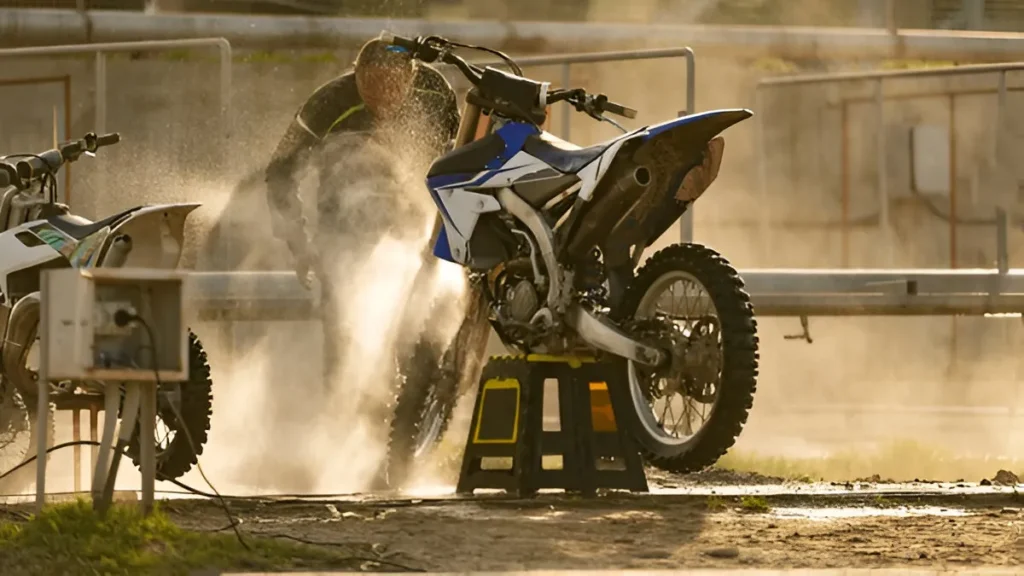
Ride Hard, Repair Smart
Dirt Bike riding is exciting—if your bike is functioning correctly. Being able to diagnose and repair common problems gives you more control, confidence, and freedom. Working on your garage or having your bike repaired by a professional is cheaper when you have a good understanding of Dirt Bike repair.
Repair Solutions for B2B Buyers and Dirt Bike Resellers
For volume businesses that operate several bikes, quick and effective repairs are key to the company. We, BSEMotor, provide full-service support to resellers, training schools, and rental facilities.
We offer:
Repair documentation access
Custom branding and custom builds to minimize part mismatches
常见问题解答
How do I learn to repair a Dirt Bike?
Begin by viewing Dirt Bike repair videos on YouTube, reading factory repair manuals, and participating in online forums. If you are committed, take local mechanic classes or go for a ride-along with a technician to get some hands-on time.
Is it worth repairing an old Dirt Bike?
Yes—depending on the model, condition, and support of parts. Specific older models, particularly two-strokes or vintage Hondas and Yamahas, are collector’s items and relatively simple to rebuild.
Where do I obtain Dirt Bike repair parts?
You can obtain parts from your local dealer or the manufacturer’s websites for OEM replacements.
